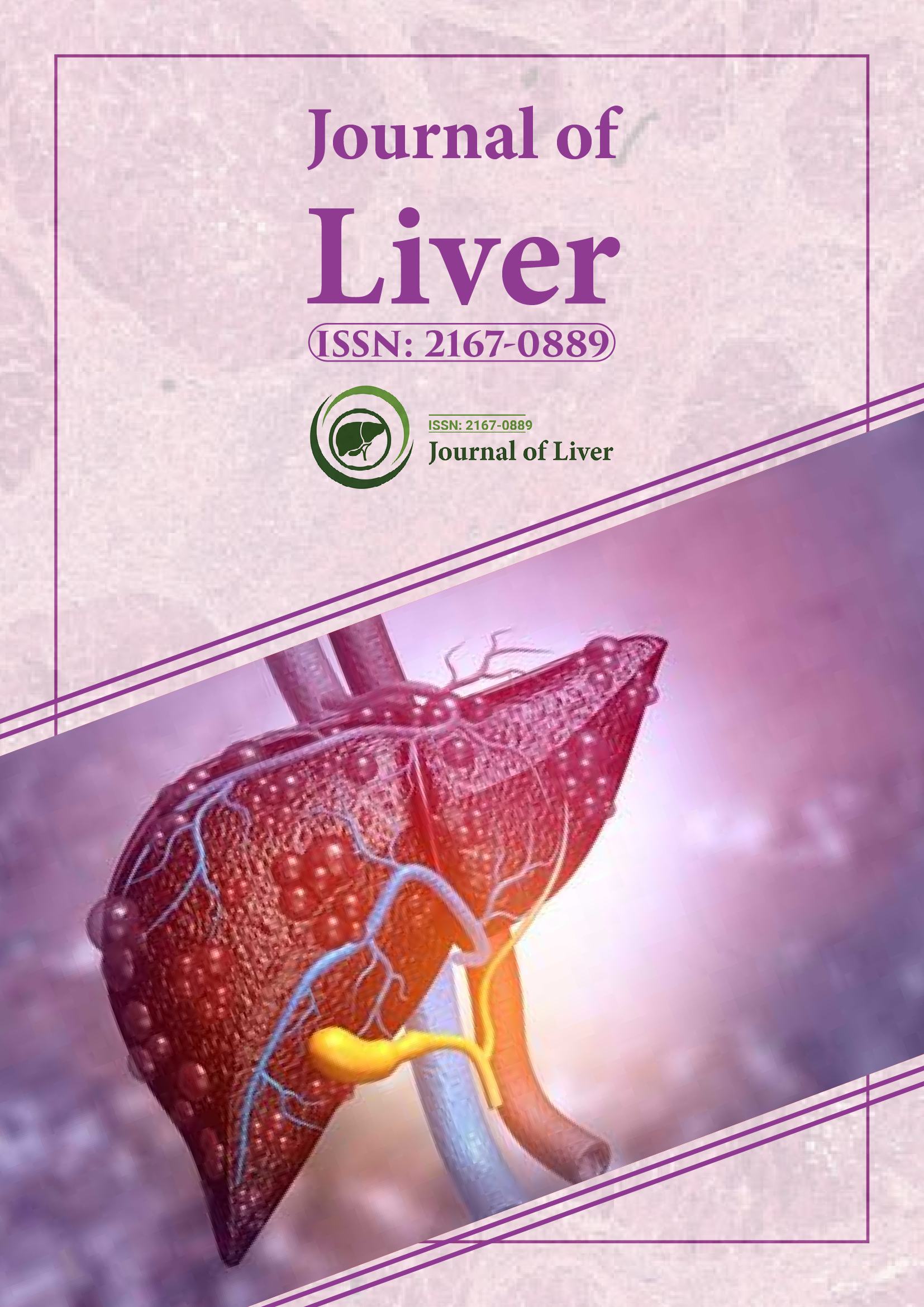Indexed In
- Open J Gate
- Genamics JournalSeek
- Academic Keys
- RefSeek
- Hamdard University
- EBSCO A-Z
- OCLC- WorldCat
- Publons
- Geneva Foundation for Medical Education and Research
- Google Scholar
Useful Links
Share This Page
Journal Flyer

Open Access Journals
- Agri and Aquaculture
- Biochemistry
- Bioinformatics & Systems Biology
- Business & Management
- Chemistry
- Clinical Sciences
- Engineering
- Food & Nutrition
- General Science
- Genetics & Molecular Biology
- Immunology & Microbiology
- Medical Sciences
- Neuroscience & Psychology
- Nursing & Health Care
- Pharmaceutical Sciences
Commentary - (2025) Volume 14, Issue 2
Clinical Outcomes of Liver Trauma with Persistently High In Hospital Mortality
David Roberts*Received: 26-May-2025, Manuscript No. JLR-25-29523; Editor assigned: 28-May-2025, Pre QC No. JLR-25-29523 (PQ); Reviewed: 11-Jun-2025, QC No. JLR-25-29523; Revised: 18-Jun-2025, Manuscript No. JLR-25-29523 (R); Published: 25-Jun-2025, DOI: 10.35248/2167-0889.25.14.254
Abstract
Description
Severe liver trauma continues to represent one of the most challenging conditions in emergency and critical care medicine. Despite advances in surgical techniques, interventional radiology and critical care support, survival rates following major hepatic injuries have not substantially improved over the last two decades. The liver’s size, vascularity and anatomical position make it particularly vulnerable during high-impact accidents such as motor vehicle collisions, falls from height and penetrating injuries. Bleeding from the liver is frequently rapid and life-threatening, often demanding immediate interventions.
The present analysis evaluates severe liver injuries within the framework of a contemporary national trauma registry. By utilizing registry data, it becomes possible to examine outcomes across different hospitals and therapeutic strategies, offering a broad understanding of current practice. Of particular interest is whether mortality rates vary by the therapeutic modality applied whether operative, nonoperative with interventional radiology, or conservative management.
Despite these advances, patients with high-grade liver injuries often present with hemodynamic instability, massive blood loss, or associated injuries that compromise the effectiveness of treatment. Mortality in such cases may depend more on the physiological insult and associated complications than on the chosen therapeutic pathway.
A national trauma registry provides an opportunity to capture a large dataset spanning multiple institutions, reflecting real-world practice rather than isolated case series. Such data can help determine whether mortality outcomes have shifted in recent years and whether therapeutic strategy significantly alters prognosis in the setting of severe liver injury.
The analysis demonstrates that despite modern interventions, severe liver injury continues to carry a high risk of death. Although the unadjusted data suggest lower mortality in patients treated with nonoperative strategies, the apparent benefit is largely attributable to patient selection. Those managed conservatively or with embolization generally arrived with more stable physiology and fewer associated injuries, while patients requiring laparotomy were often in extremis.
Operative and nonoperative strategies
The widespread adoption of NOM has undoubtedly improved outcomes in selected patients, particularly those with lower-grade injuries. However, for severe injuries complicated by uncontrolled hemorrhage, operative management remains unavoidable. The challenge lies in the fact that by the time surgery becomes necessary, patients often have already sustained profound physiologic derangement. Mortality in this subgroup appears resistant to improvements in technique alone.
Role of interventional radiology
Angiographic embolization has gained popularity as an adjunct or alternative to surgery. The registry data confirm its growing role, but also highlight that survival benefits may be limited in the context of very severe injuries. Embolization is effective in controlling arterial bleeding, but many patients succumb to coagulopathy, acidosis, or other systemic injuries despite successful vascular control.
Complications and long-term outcomes
Post-injury complications remain a significant burden. Bile leaks, abscess formation and sepsis are frequent following major hepatic trauma. Furthermore, multi-organ failure driven by shock, transfusion-related complications and systemic inflammation remains a leading cause of death. Registry data suggest that even survivors face prolonged hospitalization, multiple re-interventions and long-term morbidity.
Implications for trauma care
The persistence of high mortality despite contemporary interventions underscores the need for continued refinement in trauma systems. Rapid triage, prehospital resuscitation and the integration of hybrid operating rooms allowing immediate transition between surgery and angiography may improve survival. Equally important is the development of blood product resuscitation protocols that mitigate coagulopathy and reduce transfusion-related complications.
Severe liver injuries remain a major source of trauma-related mortality. Registry data confirm that in-hospital death rates are high regardless of the therapeutic approach. While nonoperative strategies and interventional radiology have improved management in selected patients, outcomes for those requiring emergency surgery remain poor, reflecting the gravity of physiological insult rather than technical shortcomings.
To reduce mortality, trauma systems must continue to optimize early resuscitation, integrate surgical and interventional modalities and expand the use of hybrid care environments. Multidisciplinary collaboration and future research focusing on prehospital care, coagulopathy management and long-term outcomes are essential to further advance the care of patients with severe hepatic trauma.
Citation: Roberts D (2025). Clinical Outcomes of Liver Trauma with Persistently High in Hospital Mortality. J Liver. 14:254.
Copyright: © 2025 Roberts D. This is an open-access article distributed under the terms of the Creative Commons Attribution License, which permits unrestricted use, distribution, and reproduction in any medium, provided the original author and source are credited.
